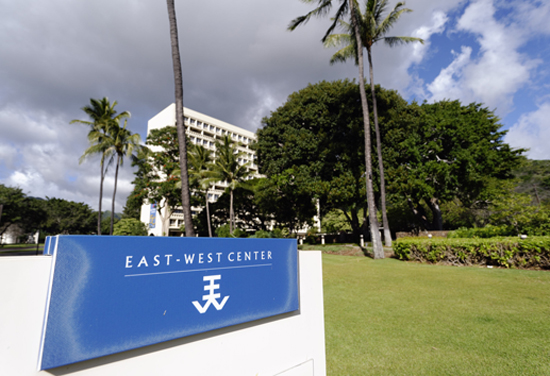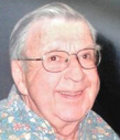
OBITUARY: Floyd K. Takeuchi pays tribute to Pacific media educator Jim Richstad.
In our respective journeys through life, we often come to forks in the road. Which way to go, left or right? The choices can be daunting, particularly when you are young and have little experience upon which to make at least a “best guess".
That’s the situation I faced in August 1974 when, as a university journalism student about to begin my senior year, I was uncertain about my immediate future. Straight to work after graduation or off to graduate school? Work on the US mainland, or Hawai'i or back to the Pacific Islands, where I was born and raised? Fortunately, fate decided that summer that I should meet Dr Jim Richstad, a soft-spoken communications researcher at the East-West Center in Honolulu, Hawai'i. Jim, as his legions of friends and former students called him, helped me choose a path to follow. My life hasn’t been the same since our first meeting 39 years ago.
Fortunately, fate decided that summer that I should meet Dr Jim Richstad, a soft-spoken communications researcher at the East-West Center in Honolulu, Hawai'i. Jim, as his legions of friends and former students called him, helped me choose a path to follow. My life hasn’t been the same since our first meeting 39 years ago.
I had just completed a summer working as a reporter at the Micronesian News Service on Saipan, a government news agency set up by the Trust Territory of the Pacific Islands whose primary clients were government radio stations across the Micronesia region (at a time when there were almost no local newspapers).
It had been an exciting summer – I got to cover stories related to the budding Micronesian independence movement; reported on a slew of government programme and personnel announcements; and, wrote a feature on the mental health challenges facing Micronesians as they moved from a subsistence, colonial culture to the pleasures and pressures of a Western lifestyle.
On my way back to university on the East Coast of the US mainland, I visited with Dr Byron Bender, a family friend who headed the Linguistics Department at the University of Hawai'i-Manoa. He was a contemporary of my parents, and both of our families had been in the Marshall Islands in the 1950s and later on Saipan. When Byron heard about my summer adventures, he said I needed to meet someone at the East-West Center. He immediately called Jim Richstad at the Center’s Communication Institute, saying, “I’ve got someone in my office you should meet.”
Moves to independence
I walked across the Manoa campus to the East-West Center to meet Jim. We had a long talk about the political changes in the Western Pacific, and the important role journalism could play in the region’s move to independence. At the end of our chat, Jim asked me: “Why don’t you apply for graduate school at the University of Hawai'i and an East-West Center Fellowship? You could work with me on some of my Pacific Islands projects.”
I followed Jim’s advice, and a year later, a newly minted Journalism graduate of Boston University, I found myself an East-West Center scholarship recipient about to begin graduate school studies at UH-Manoa. The experience changed my life, got me to most of the island Pacific as an East-West Center graduate student researcher, established friendships that last to today, and gave me a clear career path. And I owe it all to the guidance and support, and many decades of friendship, of Jim Richstad.
We lost Jim last December. He died unexpectedly, at age 79, near his home in Everett, Washington. The news, which filtered back to Honolulu, where I live, was a shock. The memories of a nearly four decade friendship, with intersecting interests in journalism and the Asia-Pacific region, came flooding back to me.
We all hope that our lives have meaning, that we impact others in a positive way. I know for certain that Jim did that in the Pacific Islands, where his interest in developing training programmes and institutions for newly independent nations helped to directly shape a generation of journalists, and in the process, all who followed them in regional newsrooms.
In the mid-1970s when I joined him, Jim was already at work with regional greats such as Sir Leonard Usher in Fiji, Tavake Fusimalohi in Tonga, and Pito Faalogo Pito in Samoa.
The need for professional development training for Pacific journalists was acute, as more and more island nations moved from colonial rule to independence.
In those days, Jim was at the forefront of developing one of the region’s first Pacific-specific journalism training manuals, Get It Right, Write It Tight. We didn’t anticipate the internet back in the 1970s, but that manual could still serve as a training guide in contemporary newsrooms. There were a host of regional conferences, put on by the East-West Center’s Communications Institute (now sadly a memory, too) and a number of international foundations that were active in the newly independent Pacific.
Possibilities limitless
From those meetings – where, truth be told, the Fiji Bitter or Vailima helped to fuel more than a few debates – came the impetus to form the Pacific Islands News Association (PINA), which was formally organised in Apia in the early 1980s. I attended that meeting at Jim’s invitation – by then, I was working for a daily newspaper in Honolulu – and the sense of excitement and possibilities for the future seemed limitless.
You have to remember that even in the 1980s, most of the communications institutions in the region were government run, newspapers and broadcasting services that had their genesis in the colonial era. Perhaps the major exception was the competitive newspaper industry in what was then called Western Samoa. The notion of a “free press,” a given in most Western societies and today in many island nations, was a novel concept in newly independent Pacific.
Jim was never one to seek the spotlight, but he was the driving force that not only led to the formation of PINA, and he also provided patient and sound counsel to the organisation’s early leaders. And his counsel was often sought by that early generation of editors and publishers, leaders such as the late John Lamani of the Solomon Islands, one of the promising young Turks when PINA was formed who himself became one of the guiding lights of independent journalism in the region.
I recall that meeting in Apia, when PINA was formalised, and there were more than a few raised voices among the gathered journalists. Jim kept everyone focused, and made sure the meeting ended with an organisation in place.
During that meeting, Jim pulled me aside and asked if I would give up my nice room at Aggie Grey’s Hotel for more modest lodgings at a motel. A representative of a major funding organisation was a late arrival at the conference and the only room that could be found for her was in the motel. I gladly made the switch – I can still hear the dripping faucet that drove me to distraction every night – and the foundation representative got my room at Aggie’s. She ended up recommending financial support for PINA, I’m happy to say.
Jim remained active in regional journalism over the years, even as his career took him to a professorship at the University of Oklahoma in the United States, then on to a prestigious journalism professorship at Singapore’s National University of Technology, and later on to a visiting professorship in Beijing. He attended a number of PINA conferences, still a quiet voice of reason during a period of increasing restiveness among the organisation’s membership.
Jim and I kept in fairly close contact over the years, as my career took me to Washington, DC, then back to Hawaii, Fiji, Japan and again to Hawaii. We met up in Singapore when I was based in Tokyo, a lovely reunion whose memory I cherish, and later again in Honolulu.
'North Pacific' group
I know Jim was deeply worried about the future of PINA – he was elected one of its few lifetime members-- but understood that organizations change as the times change. We even made a valiant effort about six years ago to form a “North Pacific” journalism group, and organised a meeting on Saipan with funding from the Sasakawa Peace Foundation.
Unfortunately, finding funding for the operations of a secretariat proved our downfall. Late last year, I queried Jim about his interest in another regional project, but I think that email got lost in the ether.
Today, there are two generations of Pacific journalists who have entered the profession since Jim was most active in the region. They work in mediums that were unthinkable in the days of typewriters, telex machines and expensive radiotelephone communications. But the core of Jim’s work in the 1970s and 1980s -- the focus on journalism quality, on improving technical skills, on having a deep understanding of journalism ethics – remain as applicable today as they did so many years ago.
Those of us who are involved in Pacific journalism have lost a great friend. I hope today’s generation of Pacific journalists take it upon themselves to hoist a few drinks in memory of Jim Richstad. His was the quiet, persistent voice of professionalism that helped to lay the foundation for today’s vibrant journalism community in the Pacific Islands. Jim loved the Pacific, just as he loved his family, which grew to 28 grandchildren and one great-grandchild.
Jim Richstad will be missed, particularly by those of us who were fortunate to have worked directly with him, and whose lives were forever changed by his concern for our profession and our welfare. I didn’t get a chance to say this enough when he and I spent time together, so let me say it now, “Thank you, Jim".
The writer is a journalist with 36 years of experience in the Asia-Pacific region. He is currently affiliated with the Waka Photo Agency, and his work can also be seen at www.floydtakeuchi.com.



